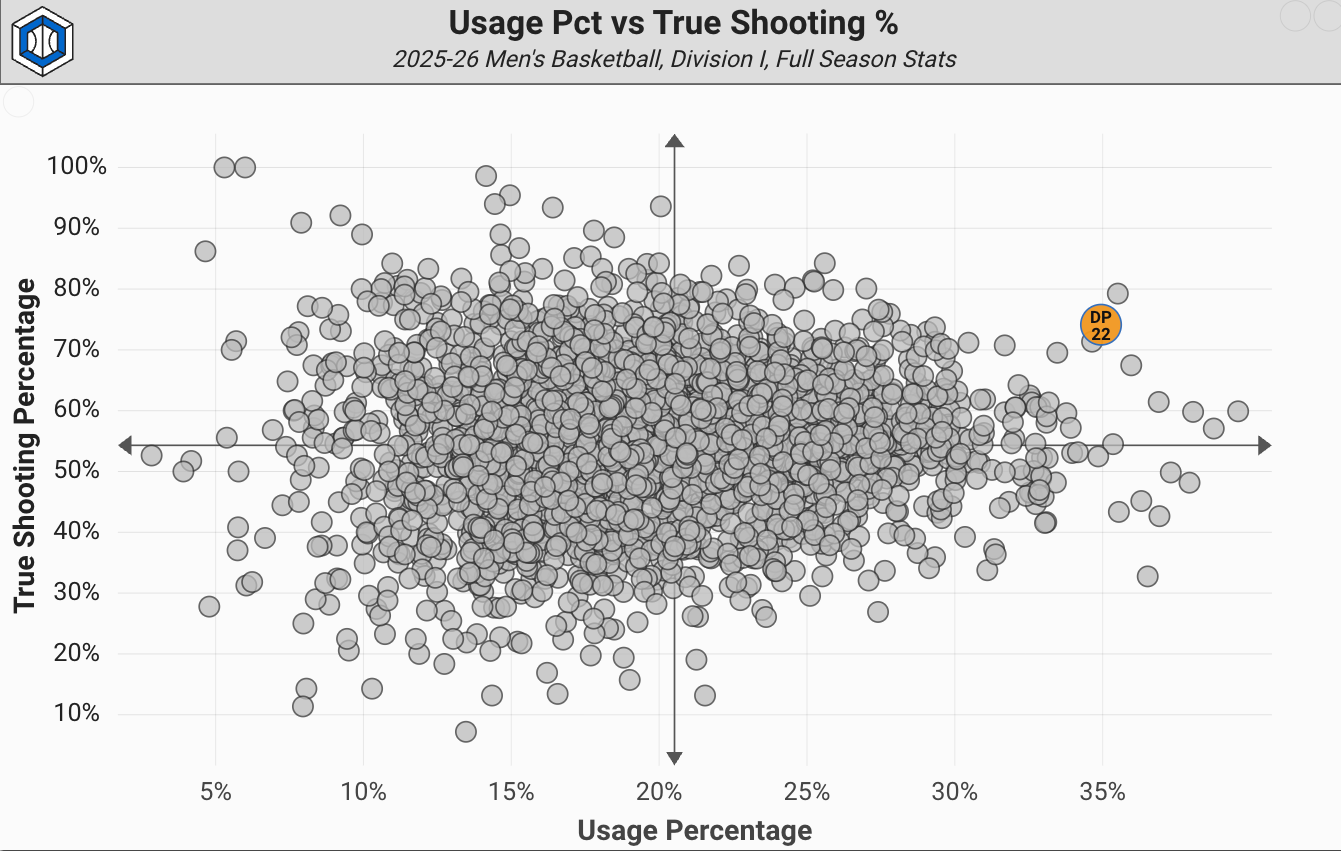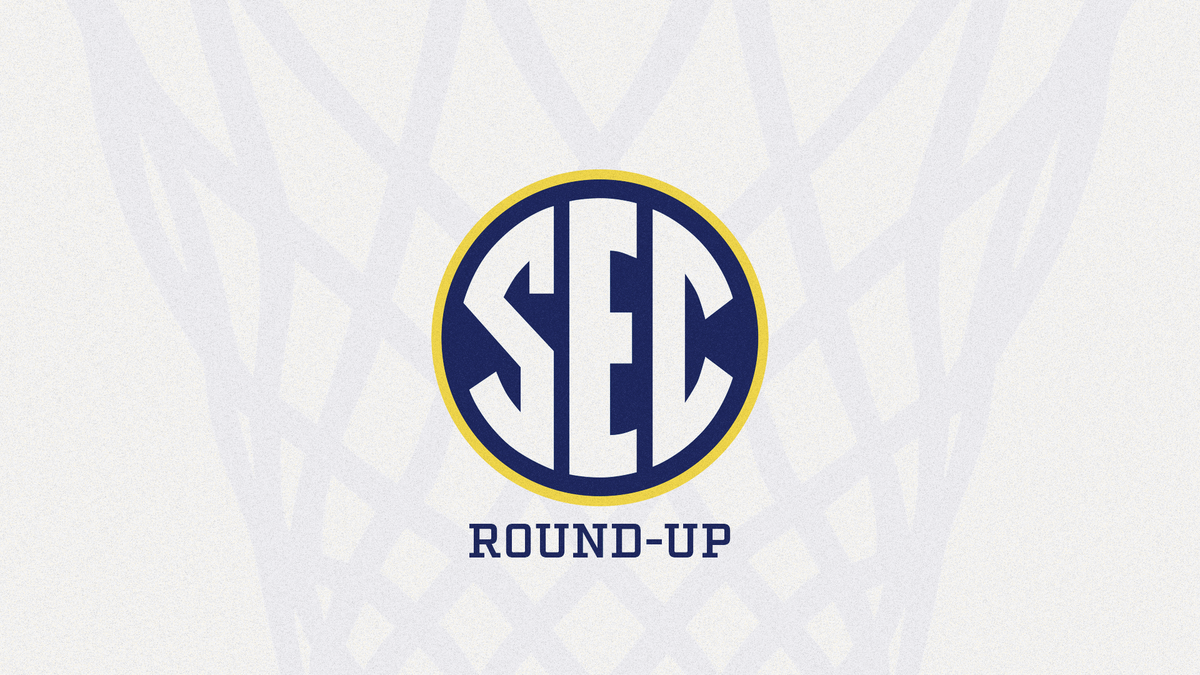Three weeks in and college basketball clearly has freshman mania. The Big 12 not only has a handful of clear difference-making freshmen but also the elite of the elite in a variety of contexts. This week's round-up examines the various storylines emerging from a handful of teams with notable freshmen in the early non-conference schedule.
Kansas' Darryn Peterson dilemma
The Kansas Jayhawks fell to 3-2 on Tuesday, losing their matchup against Duke in the Champions Classic at Madison Square Garden 78-66. The loss was also the third game that star freshman Darryn Peterson missed due to hamstring tightness.
In the two games Peterson played, the Jayhawks lived through the top-ranked 2025 recruit. The shooting guard had a usage of 34.6% while averaging 21.5 points on an effective field goal rate of 72%, looking every bit the part of a potential top of the draft prospect.

Headed into the season, the question for Kansas was who Bill Self would use as the second option behind the talented frosh. Sophomore big man Flory Bidunga was the likeliest choice, but the role would be a steep incline from his lower rotational role last season. Now, Bidunga is tasked with an even bigger share of responsibilities, sharing lead weapon duties with point guard Melvin Council.

Kansas’ restructuring and working around Peterson’s unavailability makes the top-heavy roster construction all the more confounding, especially in an up year for the conference after being the distant third-best league last season. In the worst-case scenario for the Phog Allen faithful, and Peterson’s injury lingers long enough to make him unavailable for an extended time or off-and-on, how does the coaching staff navigate the whiplash going from complimentary pieces around a generational scoring guard to a sum-of-the-parts, shared responsibility style?
Self said after the loss to Duke that Peterson would be re-evaluated at the end of this week, with the Jayhawks’ next game coming in the Players Era Tournament on Monday against Notre Dame, followed by a matchup Tuesday against Syracuse. We’ll learn a lot about the Kansas ensemble as they play their first games on the schedule against the field outside of the top 30 on KenPom, but also better than the sub-200 teams they faced off against in between.
Can you win in March without ball movement?
Perhaps convincing the top 2026 player to reclassify and come to Provo comes with some level of additional scrutiny, but after a close call with Villanova and a loss to Connecticut, national chirping about BYU’s playstyle began to surface as a reason that one-and-done AJ Dybantsa, coveted portal acquisition Robert Wright and Wooden Award finalist Richie Saunders have looked beatable to start out the season.
Head coach Kevin Young has installed an NBA-style and spaced offense for Dybantsa’s likely lone season in college. Trying to not just prepare the 6-foot-8 wing for the next level but to utilize his shotmaking abilities and elite driving speed in pick-and-roll actions. However, that spacing and heavy isolation have come with some criticisms, namely that the offense leans too heavily on Dybantsa to create too many opportunities rather than relying on ball and player movement, leading to a steady diet of easy shots.
It’s a stark change from last season’s offense, run by current Brooklyn Net Egor Demin and new Virginia Cavalier Dallin Hall, who ran an offense that resulted in 59.6% of their field goal makes being assisted (32nd highest in the country). The five-out that Young is running this year depends more on player isolation and Dybantsa and Wright’s elite speed, resulting in an assist rate of 41.1%, in the bottom 8th-percentile in Division I.
Wright is an interesting facet to this contrasting year-over-year style, as his ball-handling and passing skills would make him an ideal playmaker for both Dybantsa and Saunders. And Wright does stir the drink to some extent, averaging 4.3 assists per game. His 23.6% assist rate is the highest on a team where no one else is above 13.7%.
But Young is also valuing Wright for his burst and ability to score at all three levels and sharing those duties with the other two lead scorers. Against Dan Hurley’s Huskies, BYU didn’t record an assist in the first 17 minutes and 45 seconds of the game.
It’s clear that Young and his staff view their otherworldly talent will win out if given the opportunity. And Dybantsa cited this playstyle as a deciding factor in his commitment and there are plenty of months for the Cougars to adapt and hone their shotmaking.
But can a team win in March if the majority of their points come in isolation? In the last 10 NCAA tournaments, only 28 teams have advanced to the Sweet 16 with an assist rate of 50% or lower, and just three teams have had an assist rate below 45%.

Of those teams, only one had an assist rate lower than BYU’s, the 2013-2014 San Diego State Aztecs. Steve Fisher’s team had the 287th-ranked effective field goal percentage in the country (46.7%) and relied on their defense, as well as accruing enough points from second-chance opportunities and Xavier Thames' willing buckets.
That’s largely the composition for these second weekenders with low assist rates; defensive-first teams that won by stifling their opponents and making on misses. The one exception is 15-seed Oral Roberts in 2021, making it to the Sweet 16 on Max Abmas hitting absurdly tough shots and winning by a single possession in their two wins.
BYU’s defense doesn’t appear to be one to round out to being elite enough come end of season to withstand a cold night shooting tough shots against one of those upper echelon defense-first teams.
The Coogs' freshman duo is ready
For a conference with those aforementioned top-tier freshmen, it can be easy to neglect just how special the rest of this 2025 class has been. With as bona fide as Peterson, Dybantsa, Arizona’s Koa Peat, and Duke’s Cameron Boozer have been, it’s a marvel how much shine the Houston Cougars’ freshmen Kingston Flemings and Chris Cenac have provided while dovetailing perfectly into Kelvin Sampson’s system and approach to basketball.
Cenac’s arrival was expected to an extent as a top-10 recruit sliding immediately into the starting big role that J’Wan Roberts vacated after graduating. Cenac’s scouting report suggests an NBA prospect that could play not only two-ways but also serve as a competent shooter and super-mobile big in transition. He’s the highest-ranked recruit in Houston’s history and is averaging 10.8 points and 9 rebounds to start out the season.
The big man’s season is tracking eerily similar to former top Coog recruit Jarace Walker’s lone season with Sampson, with Cenac having a minor edge on rebounding rate and Walker having the edge on block rate. Getting that level of production early from Cenac insulates this Houston team from the front-court drop-off you’d expect a team to face, after losing Roberts, but adds an offensive dimension that last year’s team just simply didn’t have, and allows defensive menace Joseph Tugler to focus on his strengths.

But the player comparison I didn’t expect for this Sampson freshman class is that point guard Kingston Flemings is comfortable getting downhill to a level reminiscent of Jamal Shead. Flemings is what a lab would put together when tasked with creating the ideal Sampson guard. The 6-foot-4 Texan possesses speed and athleticism that pair incredibly well with his driving handles and a verticality we haven’t seen from the Coogs’ previous point guards. He's proven an ability to score at the rim (81.8% on 11 attempts) and in the paint (90% on 10 attempts).


Fleming is terrific as a pick-and-roll ballhandler, averaging a point per possession from those looks. He’s been a perfect 7-for-7 from the field in isolation and holds an effective field goal percentage of 71.4% on spot-up shot attempts.
There’s no question that Flemings' shot will regress as the season goes along, but it’s hard to not be excited about what his game looks like as he gets more and more familiar to the college game.
And as outstanding as the freshman guard has been on offense, his defensive performance in the first 4 games may be more impressive. When defending the pick-and-roll, opponents are shooting 28.6% and turning the ball over nearly half the time (7 out of 15 attempts). He’s holding his man to 25% shooting when in isolation and has a defensive rating of 90.3 on the season.
Considering Milos Uzan returned as the point guard of a team that went to the championship last season, only to be moved off the ball for Flemings, Sampson clearly sees game-changing potential in Flemings. And that assessment has paid off.
Games to watch this weekend
Cincinnati vs. Louisville (Friday, November 21st, 6:30 pm ET)
Wes Miller’s Bearcats have the opportunity for a marquee win as they host the Louisville Cardinals in an off-campus game. It’s a battle between two teams ranked 15th or higher in pace of play and the classic battle of premier offense from Louisville, going up against a Cincy defense boasting the 15th-lowest allowed effective field goal percentage to start the season. Cincinnati is top-30 in the country at generating turnovers on defense, something the Cardinals have been good at avoiding in the early stretch.
Texas Tech vs. Purdue (Friday, November 21st, 9:30 pm ET)
Two top-15 teams that struggled to put away their preliminary opponents in the Baha Mar Championship. The game features immense talent, with Preseason AP All-American JT Toppin of Texas Tech matching up against dynamic post scorer Trey Kaufman-Renn, and another Preseason American point guard, Braden Smith, squaring off against rising NBA prospect Christian Anderson. With Matt Painter and Grant McCasland scheming up this one, we’re in store for a game that could be heavily referenced come late March or early April.


